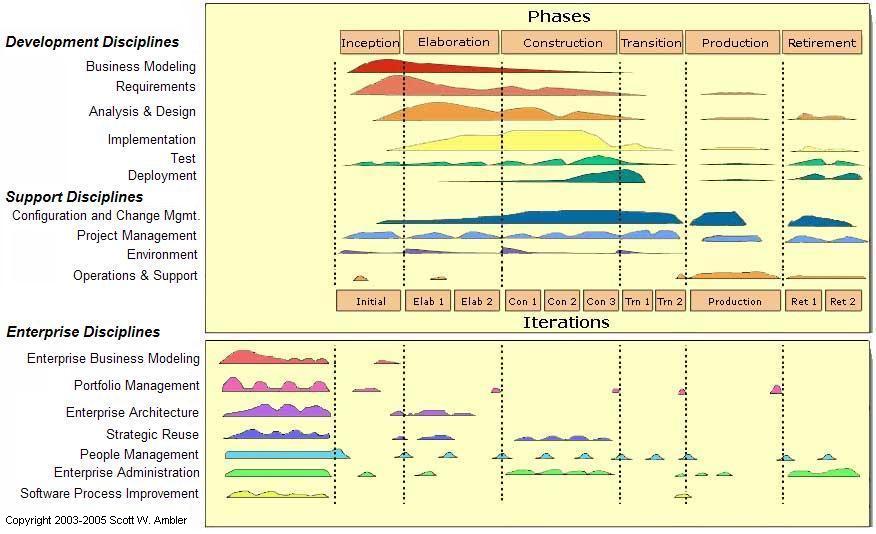How to include the entire software process to enterprise level, not just development process
The Enterprise Unified Process (EUP) is the modified Rational Unified Process for the enterprise need, adopted RUP to software development process at enterprise level. The original source is ‘The Enterprise Unified Process: Extending the Rational Unified Process’ book by Scott W. Ambler, John Nalbone, and Michael J. Vizdos.
Book short description: This book describes the fundamentals of the Enterprise Unified Process (EUP), an extension of the IBM/Rational Unified Process (RUP) that helpsmake it a full IT lifecycle. This is a “how to” guide usingreal-world experiences and examples for the practitioner. Enterprise Unified Process is built onbeing an add-on to the RUP, instead of a detractor.

Also we introducing you ‘Introduction to the Enterprise Unified Process (EUP)’, the whitepaper summarized the book The Enterprise Unified Process: Extending the Rational Unified Process, published by Prentice Hall PTR, February 2005.
“Your organization likely has several software projects that it’s currently managing. You likely have some systems that you are currently operating and supporting in production. The actual focus of most organizations isn’t on the development of a single project, it’s on the development, operation, support, and maintenance of a collection of systems”, says Scott W. Ambler.
The often case is when you have the software that are in production and you have an active development phase.
“This implies that processes for operations, support, and maintenance efforts need to be added to the RUP. Second, to be sufficient for today’s organizations the RUP also needs to add support for the management of a portfolio of projects, something other processes have called programme, multi-project, infrastructure management, or enterprise management”. So at the picture below you can see ‘The enhanced lifecycle for the Enterprise Unified Process (EUP)’:
During times the Enterprise Unified Process was enhanced with the “Production” and “Retirement” phases, and it was added the enterprise disciplines such as “Enterprise Business Modeling”, “Portfolio Management”, “Enterprise Architecture”, “Strategic Reuse”, “People Management”, “Enterprise Administration”, and “Software Process Improvement”. See the picture ‘The Enterprise Unified Process (EUP) lifecycle v2004’
Conclusion
The detailed information about new disciplines can be found at whitepaper ‘Introduction to the Enterprise Unified Process (EUP)‘. More information about Enterprise Unified Process you can find at the book ‘The Enterprise Unified Process: Extending the Rational Unified Process‘. SoftElegance is the software development company able to implement the best Enterprise Unified Process practices for your organisation and to be outsourcing partner for your IT department.


